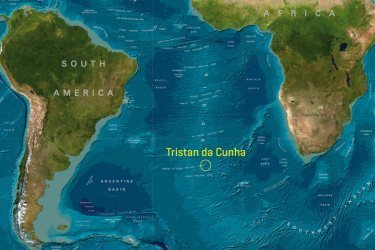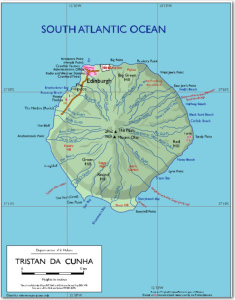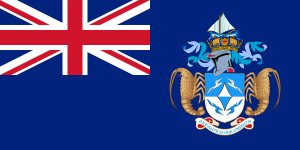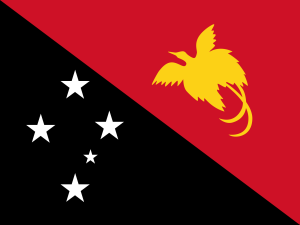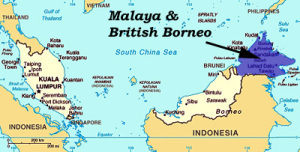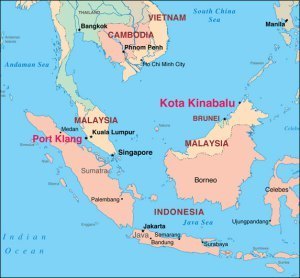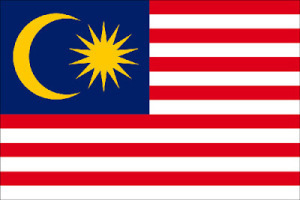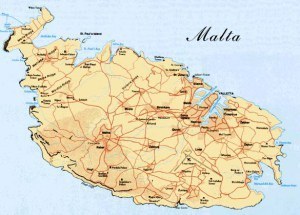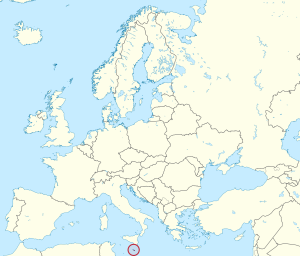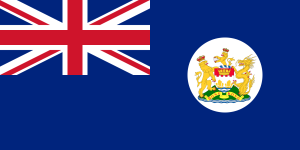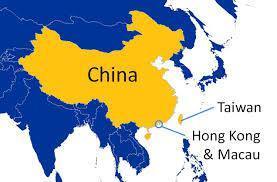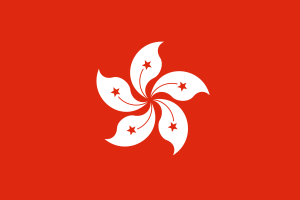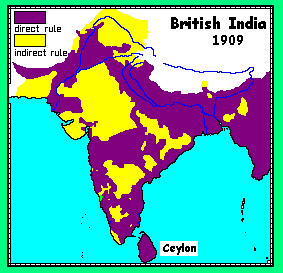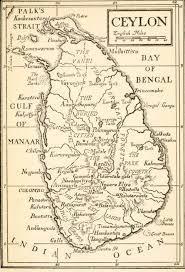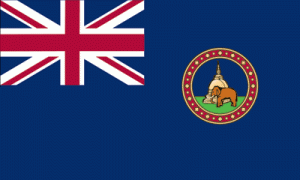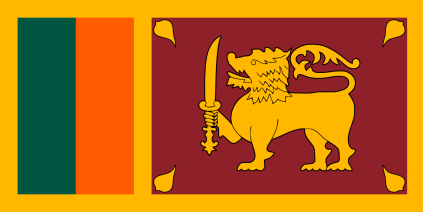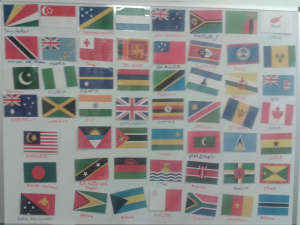Louise M.H. Miller's Blog, page 9
April 20, 2015
A Month of: Brief Histories of British Empire Territories – Tristan da Cunha
Tristan da Cunha
Tristan da Cunha along with Saint Helena and Ascension, are part of the British Overseas Territory.
The island was annexed in 1816 in a bid to prevent the French from using the island as a means from which to rescue Napoleon Bonaparte during his exile on Saint Helena.
One of its neighbours, the wildlife reserves of the aptly named Inaccessible Islands, was attempted to be colonized which failed.
As a base to prevent a French base, the island was populated by a garrison of British marines, which gradually was supplanted by a civilian population, including a group of whalers who used the island���s strategic location as a base for their operations in the south Atlantic. The islands had also been used as a stop-over point to re-fuel and re-supply ships on long international voyages, however with improvements in ship technologies and with the opening of the Suez canal, the mid-way base was decreasingly needed and the island grew more isolated.
A Letters Patent in January 1938 declared the islands to be a dependency of Saint Helena.
With the outbreak of the Second World War, the island again was used as a base of operations, this time as a top secret weather and radio station for the Royal Navy coded named HMS Atlantic Isle. The base���s task was to monitor, and relay information, on the movements of U-Boats and German shipping in the South Atlantic.
1961 saw the entire population unexpectedly evacuated to Surrey in England after a volcanic eruption. Most of the population did return in 1963.
Executive authority over the island of Tristan da Cunha continues to be vested in the Queen and through her representative by the Governor of Saint Helena.
Filed under: Uncategorized Tagged: British Empire, British history, British Overseas Territory, Saint Helena, Tristan da Cunha


April 16, 2015
A Month of: Brief Histories of British Empire Territories – Papua New Guinea
Papua New Guinea
Papua New Guinea is not only one of the world���s least explored countries it is also one of the most culturally diverse, with for example c. 841 different recorded languages.
The Colony of Queensland, in 1883, desired to annex the southern half of eastern New Guinea. In turn the southern coast and its adjacent islands became a British protectorate in November 1884. On September 4th 1888, the protectorate was annexed outright becoming British New Guinea.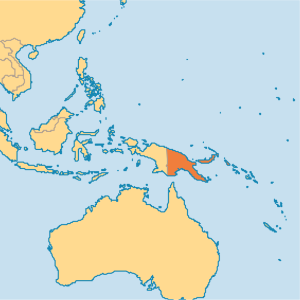
Europe���s desire for coconut oil led to German interest in the northern quarter of the island. In 1884, the German Empire formally took possession of the region and put the administration into the hands of the chartered trading company, the German New Guinea Company. The German imperial government assumed direct control of the territory in 1899. The region was now known as German New Guinea.
British New Guinea was placed under the authority of the Commonwealth of Australia in 1902. With the outbreak of the First World War in 1914, Australian troops occupied German New Guinea and remained under Australian military control until the end of the war.
Under the League of Nations, New Guinea was mandated to the Commonwealth of Australia until the Japanese invasion in December 1941, where much of the territory was occupied by Japanese forces. The region was retaken by Australian and American forces during the final months of the Second World War.
New Guinea gained its independence from Australia, as an arm of the British Empire, in 1975 when a peaceful independence occurred on September 16th under the watchful eye of the United Nations. While close ties remain and it is still a Commonwealth realm, actual executive powers lies in the hands of the Prime Minister.
Today, many people still live in extreme poverty.
Filed under: Uncategorized Tagged: australia, British Empire, British history, history, league of nations, papua new guinea, Second World War


April 13, 2015
A Month of: Brief Histories of British Empire Territories – North Borneo
North Borneo
North Borneo was a British Protectorate under the sovereignty of the North Borneo Chartered Company from 1882 to 1946 after which it became a Crown Colony until 1963.
In July 1881, the British North Borneo Provisional Association Ltd, formed by Alfred Dent and his brother obtained a Royal Charter. A year later the Association was replaced by the North Borneo Chartered Company which proceeded to organize the settlement and the administration of the territory despite protests by the Dutch, the Spanish and the Sarawak governments. Borneo, like Malaya, was a small fragile independent state who were keen to obtain British ���friendship and armed assistance���.
The Company acquired further sovereign and territorial rights from the Sultan of Brunei.
James Brooke, ���another romantic swashbuckler��� established a foundation which would enable economic growth by restoring peace to a land where piracy and tribal feuds had dominated. Anti-piracy operations were an extension of the wider effort to break into the Far Eastern markets (like Borneo and others). But the suppression of coastal piracy was not an easy task, as the Borneo and Malay pirates were ���persistent and elusive���. It abolished slavery, set up transport, health and education services. Local and immigrant (mainly Chinese) labour worked hard to allow the towns and farms to thrive. Industries such as timber, tobacco and rubber boomed.
The Company oversaw the administration of the Protectorate from 1881, with only foreign relations being in the control of the crown.
Although the Company had had a great impact on the region by predominantly restoring peace, the local population sometimes resented the imposition of British rule. They opposed the taxes and the loss of land to European plantations. It was the British, not the native chiefs, who held the top posts, with the chiefs managing people at the grassroots level. However, this was not an attempt at indirect rule.
The Company continued to rule until part way through the Second World War, when from January 1st 1942 the Japanese invaded and captured the region. As the Company only had 650 men at their disposal in the North Borneo Armed Constabulary, the Japanese swept through the region with very little resistance.
During the military occupation by the Japanese from 1942 to 1945, the Europeans were interned, public services ceased and poverty, disease and malnutrition became widespread concerns.
Before the end of the war the Australian 9th Division landed in Brunei and liberated much of North Borneo. Until the restoration of the civil government at the end of the war, North Borneo was placed under British Military Administration.
As the Company could not afford to reconstruct Borneo which had been devastated by the war by Allied bombing, the Company sold its interests to the British government and the territory was transferred under the control of the Colonial Office, becoming a Crown Colony on July 15th 1946.
The system of administration remained much the same as under the Company with the added benefit of having access to the British government funds needed for reconstruction.
High ranking posts continued to be held by the British. In fact it was not until 1957 that the first non-European filled an administrative officer���s post.
British North Borneo was granted self-government on August 31st 1963. Just over two weeks later the state united with Malaya, Sarawak and Singapore to form the Federation of Malaysia. This took place on September 16th 1963.
James, Lawrence The Rise and Fall of the British Empire, 1994��page 244
��Ibid page 245
��Ibid��page 177
Filed under: Uncategorized Tagged: British Empire, British history, crown colony, James Brooke, Japanese, Malaya, Malaysia, North Borneo, Second World War 

April 10, 2015
A Month Of: Brief Histories of British Empire Territories – Malta
Malta
Above: Flag of Malta from 1943-1964
Malta is a southern European country in the centre of the Mediterranean, it is one of the world���s smallest states but also one of the most densely populated. Malta has long been an island of strategic importance not just for the British but for the Phoenicians, the Greeks, the Romans and the Knights of St. John, to mention a few.
Malta became part of the British Empire under the Treaty of Paris in 1814. Malta became a shipping station and fleet headquarters under the empire due to its halfway location between the Strait of Gibraltar and the Suez Canal. It was not until the opening of the Suez Canal that Malta enjoyed a tremendous boost in its economy. But the benefits did not last forever. The 1940s saw Malta���s economy suffer due to its dependence on shipping and with technological improvements ships tended to have longer ranges, and so Malta���s strategic position was no longer needed.
However, its proximity to shipping lanes did mean that Malta played an important role in the Second World War. But Malta did not just remain a strategic position during the war. The Siege of Malta brought the war directly to her shores. King George VI awarded the people of Malta collectively the George Cross for their bravery during the siege.
���To bear witness to a heroism and devotion that will be long famous in history���.
The 1960s saw intense negotiations between the Prime Minister of Malta George Borg Olivier and the United Kingdom, after which Malta was granted independence on September 21st 1964. Malta retained Queen Elizabeth II as their head of state. A governor-general exercises effective authority on her behalf.
Upon independence Malta became the Republic of Malta but was still heavily influenced by British rule. Their parliamentary system and public administration were modelled on the Westminster system of the UK.
Major sources of limestone, a favourable geographical location and a productive labour force as well as foreign trade, manufacturing and tourism and film production all contribute to the nation���s economy.
Filed under: Uncategorized Tagged: British Empire, British history, george's cross, historical fiction, malta, siege of malta


April 8, 2015
A Month Of: History Blogs – British Empire Territories – Hong Kong
Hong Kong
Hong Kong was ceded to the British Empire after the First Opium War (1839-1842) and the Union Jack was raised on 26th January 1842 formally at Possession Point. Hong Kong had become a Crown Colony. Not satisfied with merely controlling the island and its harbours, the British extended their area of control to encompass the Kowloon Peninsula in 1860 and the New Territories in 1898. They claimed this extension was undertaken for defensive purposes.
From the beginning of British rule Hong Kong was a free port, an entrepot of the British Empire; the area was industrialised and improved and the population increased dramatically. A real benefit of acquiring Hong Kong was that it provided firms with a base for their opium-smuggling operations and to provide access to the long sought after China trade.
The area was occupied briefly by Japan during the Second World War, when British and Canadian forces were over run and forced to surrender. Hong Kong fell to the rapidly advancing Japanese army on 25th December 1941. The success of the Japanese army which soon spread throughout the region threatened to turn the tide of the war.
During the Japanese occupation, the citizens of Hong Kong were treated abominably and brutally and by the time the war was over and Britain had reclaimed the region in 1945, the population of Hong Kong had plummeted from 1.6 million to just 600,000 in the space of three years.
In 1983, after years being a Crown Colony the debate between Britain and China opened over the future sovereignty of Hong Kong, after the ninety-nine-year lease under which the region was acquired was coming to an end. As a result the Sino-British Joint Declaration was agreed in 1984 which formally transferred sovereignty to the People���s Republic of China. The hand-over date was set to take place in 1997. July 1st 1997 marked the end of the 156 year British colonial rule with the final transfer of power being marked with a ���display of imperial theatre���.
Ferguson, Niall, Empire How Britain Made the Modern World,��2002��page 166
James, Lawrence, The Rise and Fall of the British Empire, 1994��p241
Ibid p629
Filed under: Uncategorized Tagged: British Empire, British history, history, Hong Kong

April 1, 2015
A Month Of: History Blogs – Countries of the British Empire – Ceylon
Ceylon
A Brief History of Ceylon During the British Empire
Better known now as Sri Lanka, which lies on the southern tip of India and remains a strategic naval link for the area. Back in the beginnings of the British Empire it was an important spot for the silk road trade, now however, the country is famous for its diversity. It boasts an immense wealth of cultures, religions, languages and exports included tea, coffee gems, coconuts, rubber and cinnamon.
Prior to 1638 the Portuguese occupied the coastal regions, after which they signed a treaty with the Dutch East India Company, when Dutch explorers arrived in the area. With the rise of Napoleon, the Dutch, as they were elsewhere, were worried that the region would fall into French hands and so they handed over the control and the protection of the region to England. The British easily occupied the region and in 1796 renamed the region Ceylon.
The rulers of Ceylon were unable to halt Britain���s advance from the coastal regions, and by 1814 Ceylon lost its independence and was brought under the control of the British Empire.
The Colebrooke-Cameron Reforms in 1833 marked the beginning period of British control, in which it amalgamated the Kandyan and maritime provinces creating a single unit of government, and saw the introduction of a utilitarian and liberal political culture and the establishment of an executive and a legislative council.
The economy was at first dominated by coffee when plantations were introduced and initially thrived, however following the 1847 depression which forced prices down, an influx of a leaf disease literally killed the industry in 1869. Tea production became the substitute. After the loss of Malaya during the Second World War to the Japanese, Ceylon swiftly raised its output of rubber.
The nineteenth century saw the creation of a new professional class under British rule to transcend cultural and caste differences in order to encourage more people into the Ceylon Civil Service.
From the early twentieth century the push for more constitutional reforms came. Major Sinhalese and Tamil political organisations in 1919 united to form the Ceylon National Congress, however it collapsed within a year after failing to win mass support from the people.
Despite this collapse, changes did come. Universal suffrage was introduced in 1931 through the Donoughmore Reforms. The reform was unpopular and was opposed by the Tamil political organisations as universal suffrage, for them, ran the risk of reducing them to a minority.
Another reform came in 1944-5 with the Soulbury Reforms. These reforms brought Dominion Status to Ceylon. Independence soon followed on 4th February 1948 as a result of the reform.
Filed under: Uncategorized Tagged: British Empire, British history, british india, ceylon, dutch east india company, history, raj, silk road, sri lanka

March 30, 2015
Blogging Themes
Over the next few months I’m going to be concentrating on monthly blogging themes for a while. Hopefully this will bring a degree of fluidity to my blog posts that I’ve been searching for, and now the end of a month is (almost) here, my next post will be a themed post and I’ll start from the beginning of April.
Not only will it give my blog focus, it’ll give my mind at bit of focus too, hopefully. An issue at work has been somewhat stressful to say the least, and I’m focusing on my current project which is coming together nicely, so with work and my project sometimes I lack the get-up-and-go��to blog.
So soon you’ll see more order here and more themes – whether it’ll be a month of book reviews (general or specific), a month of history, a month of all things libraries, a month of all things writing, top tens, and how to’s….etc etc
[Luckily though, seen as I don’t blog every day (although that may be one of the future monthly themes), you won’t feel inundated with blog after blog of that month’s theme.]
Filed under: Uncategorized Tagged: blogging, blogging themes, blogs, work, writing themes

March 27, 2015
Posture: for writers
Posture: for writers
Writers spend a lot of their time sat down ��� I do at the very least. Sat down at their computers, laptops, with their note pads.
According to some research done and explained to us via the BBC��it���s not a good thing to be sat at your desk for too long. No surprise there really. We knew that it wasn���t good for you, for your posture, your health or your waistline, but findings reveal that office workers are ���too sedentary��� and are particularly prone to sit for long periods of time without moving ��� only getting to their feet to visit the bathroom or make a cup of tea/coffee. Many office workers even eat at their desks.
Writers like office workers are prone to suffer for these long hours of sitting. True writers can be more flexible (they can pace the floor while thinking or editing even); and they may not sit down for hours on end day in day out. A lot of research is done out and about, a visit to the library, museums or the place where your novel is set. There���s also times when you meet and greet fellow writers like yourselves. And we have the tendency, especially if we work from home, to procrastinate and do that little bit of housework that needs doing. Or more positively when we take a break we can do some housework or whatever, to get our bodies moving.
However, we must and do spend a large amount of time sitting at our desks with our computers (or note pad depending on how you like to write) actually physically writing. Putting words on the page. And when you really get into it, time easily gets away from you and the next moment you look up hours have flown by with you just sitting.
What���s more where we sit can have a huge effect. Office workers have to sit in chairs at their desks. But writers working from home well we can write from wherever we want. At our desks, on the sofa, in bed. Wasn���t it Marian Keyes who used to write everything snuggled up in bed? So for writers it can be more than just sitting down for long periods of time which can affect our postures, it���s also where you sit and therefore how. On the sofa/couch or in bed you naturally slump. At the desk you are forced, I feel, to sit up straighter.
For the past few days I���ve been sitting on the sofa, as primarily I���m making notes and doing research, but my back now is hurting, so I���ve brought myself to type at the table.
What can we do?
Have a break. We all know how important it is to take a break, but it���s equally important to take a break from sitting. Get up, stretch, move around.
Stretch. A couple of stretches every now and again even while sitting can help posture.
Posture. Sit up straight.
Stand up when you can. When you���re on the phone, making brief notes etc.
Go for a walk. I know we���d all love to have the time to go for a walk, but time doesn���t always allow us to. Even if you just walk around your house or around the local area for ten minutes or so can work wonders not just for your posture or waistline but also for your creativity.
Split up your chores. So you have to go the library, to the shop, to the dentist, whatever. If you can split these chores up and try to do one a day rather than all in one afternoon. This then doesn���t take up a whole afternoon, and it gets you away from the computer (great), standing up (great) and moving around, burning calories and improving posture (great). It can even be household chores, like the ironing or vacuuming.
If nothing else think of this: “It’s about changing attitudes to how people behave at work and changing the culture of the workplace that just means moving around at little bit more, even just standing up can make a big difference to calories burned and how alert, creative and productive you are.”
Filed under: Uncategorized Tagged: bad posture, BBC, desk work, exercises at work, office exercises, sitting at work, sitting down, working at a desk, writing

March 23, 2015
Learning in Libraries
So back on Monday 9th March it was Commonwealth Day.
As part of the commemoration for it I put up the following display of flags for children (and adults) to match with the correct country. It was great to see all the people excited about trying to guess which country matched with which flag, and learning which countries were part of the Commonwealth, and really what the Commonwealth is.
And this is the result…
…It was great to get people interested in history, for people to learn something new and most importantly to learn something new for themselves, to use resources within the library whether books or even the internet.
Filed under: Uncategorized Tagged: commonwealth, commonwealth day, history, learning, libraries, teaching

March 16, 2015
Writers Using Smartphones
So we all know that being a writing is more than just putting words onto a page. Its also about networking, planning, researching, brain-storming, editing etc and so forth…
Technology today is all around us. Even in our hands (or pocket or bottom of handbag). The age of the smart phone has well and truly dawned.
While for many, myself included, smartphones have become a bane of our lives, in some ways. In other ways they have proved themselves so completely useful and integral that we cannot picture our lives without them. I use mine on a everyday basis. Yes as a simple, humble phone, but also for note-taking and using useful everyday apps.
Internet on the go.
Note-making.
Diary management & Calendar.
Apps.
Network apps – like twitter, Facebook and the others…
Clock.
Calculator.
Camera.
Emails delivered direct to your smartphone.
There are countless other uses – but this is basically what I use my smartphone for.
But even I don’t feel that I’m using the smartphone technology, as a writer, to its full potential. I still like using a computer screen to send tweets etc. So should I be using it more often when I’m out and about? Probably. I can network on the go. Make notes on the go…. You get my point. I’m all for trying to get more��writing��out of the day – especially when you have other things to contend with – so I really should be taking a leaf out of my own book and using my smartphone more on the go – to save time elsewhere. Killing two birds with one stone. But like a lot of things its a matter of habit – and having a decent WiFi signal.
So I must start getting into the habit of using my smartphone as more than just a ‘phone’. I’ll let you know how I’m getting on.
Are any fellow writers or readers using any fantastic apps at the moment?
Filed under: Uncategorized Tagged: apps, smartphone, technology, Writer, writing, writing apps

Louise M.H. Miller's Blog
- Louise M.H. Miller's profile
- 18 followers


